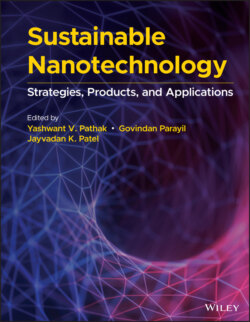Читать книгу Sustainable Nanotechnology - Группа авторов - Страница 35
1.4.3.2 Energy Production
ОглавлениеSome of the already discussed nanomaterials can be used to make already established energy production mechanisms more effective. To make solar cells more cost‐efficient and effective, organic materials such as CNTs have been used. Organic materials have quite a few advantages over inorganic materials in the case of solar cells. Organic semiconductors exhibit a high absorbance coefficient, which allows the photons to be absorbed within a thin layer of the solar cells. This marginally decreases the cost of solar cell production. Additionally, organic materials have shown to be more efficient with increasing temperature, whereas inorganic materials have exhibited a loss of efficiency when the temperature increases. Even though the use of CNTs in polymer‐based solar cells have very limited efficiency, for commercial use, it is more desirable due to its low cost and various applications [110].
Nanotechnology is utilized in unconventional methods of energy production in many ways. In the case of windmills, nanotechnology can be used to enhance the operation and efficiency of it. The use of CNTs in making rotor blades results in higher fatigue resistance, shear strength, and fracture toughness [111]. Nanocomposites can also be used to coat the blade to prevent it from damage from the weather and other environmental factors. For example, super‐hydrophobic nanocomposites containing titanium power have been shown to reduce water adhesion strength, which means in extremely cold temperatures the water will not stick to the rotor blades and possibly damage them [112]. Nanocoatings and nanocomposites can also be used for corrosion protection in hydropower systems and for drilling equipment of geothermal, oil, and gas systems [113].
